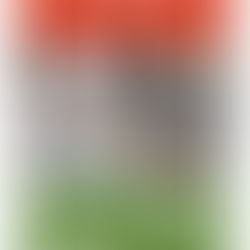Cupping Therapy: Part 2 - Techniques & FAQ

Cupping therapy techniques and tools
There are various cupping therapy techniques and tools that can be used depending on the desired outcome and the practitioner's training. The most common techniques include dry cupping, wet cupping, and fire cupping. Dry cupping involves placing cups on the skin without any additional treatment. Wet cupping involves creating small incisions on the skin before applying the cups, which allows for controlled bleeding and further detoxification. Fire cupping involves briefly heating the cups with a flame before placing them on the skin, which creates a vacuum effect.
Cupping therapy tools can vary depending on the practitioner's preference and the technique being used. Traditional cupping therapy tools are made of glass and require heating to create suction. However, silicone cups have become popular in recent years due to their convenience and ease of use. Silicone cups can be easily squeezed to create suction, eliminating the need for heating or flame. Some practitioners may also use manual or electric vacuum pumps to create suction with silicone cups.
Precautions and considerations for cupping therapy
While cupping therapy is generally considered safe, there are some precautions and considerations to keep in mind. It is important to consult with a qualified cupping therapy practitioner before undergoing treatment, especially if you have any underlying health conditions or are taking medication. Cupping therapy should not be performed on broken skin, sunburned skin, or areas with moles or varicose veins. It is also important to drink plenty of water before and after cupping therapy to help flush out toxins and prevent dehydration. Some people may experience temporary skin discoloration or bruising after cupping therapy, which is a normal side effect that typically resolves within a few days.
Frequently asked questions about cupping therapy
Is cupping therapy painful?
Cupping therapy is generally not painful, but some people may experience a mild discomfort or pulling sensation during treatment. The suction created by the cups should not cause any significant pain.
How long do the effects of cupping therapy last?
The effects of cupping therapy can vary depending on the individual and the condition being treated. Some people may experience immediate relief, while others may require multiple sessions to achieve the desired results.
How often should I undergo cupping therapy?
The frequency of cupping therapy sessions can vary depending on the individual and the condition being treated. It is best to consult with a qualified practitioner to determine the appropriate treatment plan for your specific needs.
Can cupping therapy be combined with other treatments?
Cupping therapy can be used as a complementary treatment alongside other therapies such as acupuncture, massage, or chiropractic care. It is important to inform your healthcare provider about any other treatments you are undergoing to ensure safe and effective integration.
Cupping therapy is an ancient practice that offers a wide range of benefits for pain relief, stress reduction, sports recovery, detoxification, skin health, and respiratory conditions. With its long history and proven effectiveness, cupping therapy continues to gain popularity as a natural and holistic approach to healing and well-being. Whether you're seeking relief from chronic pain, looking to reduce stress levels, or simply aiming to improve your overall health and beauty, cupping therapy can be a powerful tool in achieving your goals.


































Comments